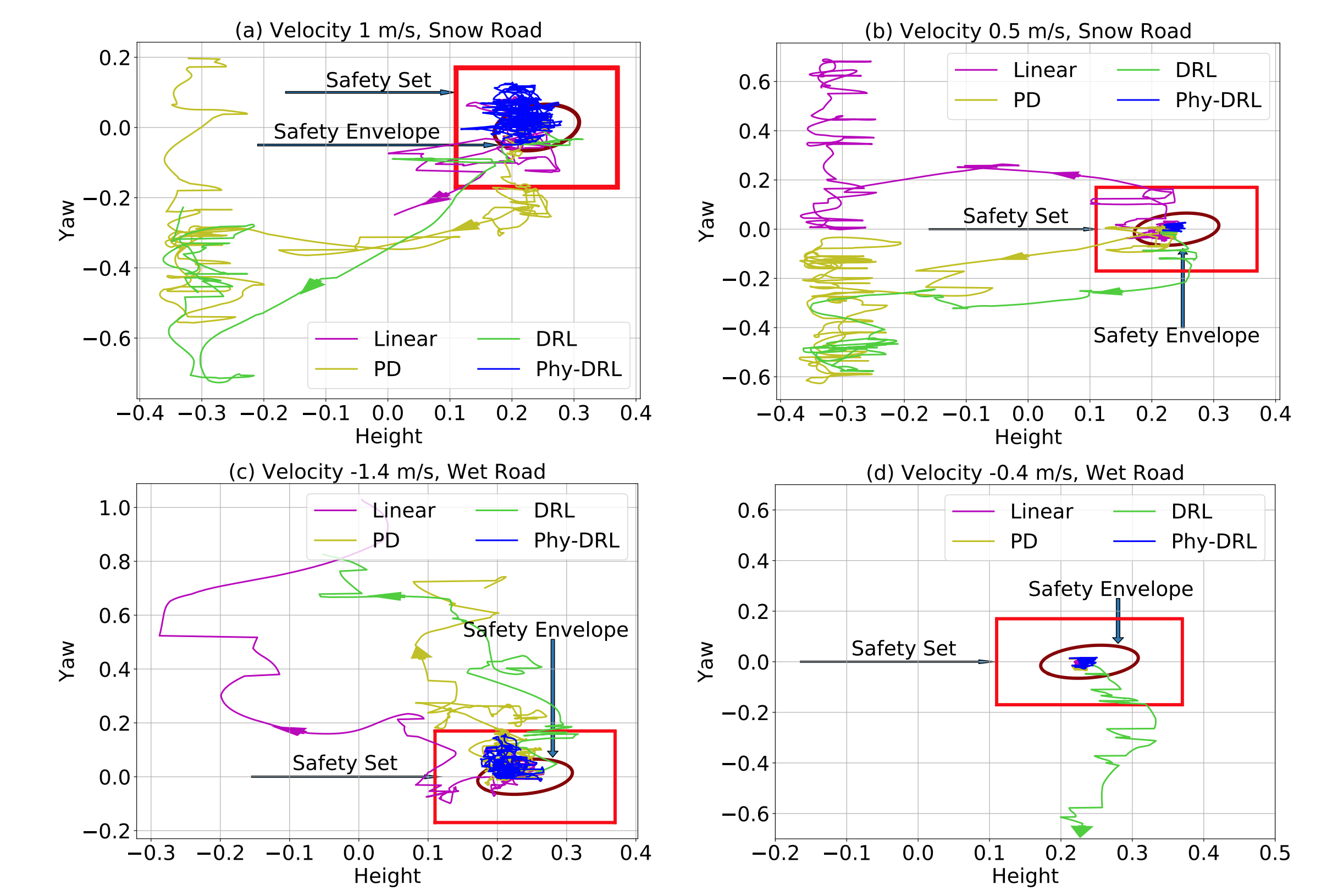Overview

This paper proposes the Phy-DRL: a physics-regulated deep reinforcement learning (DRL) framework for safety-critical autonomous systems. The Phy-DRL has three distinguished invariant-embedding designs: i) residual action policy (i.e., integrating data-driven-DRL action policy and physics-model-based action policy), ii) (automatically construct) safety-embedded reward, and iii) physics-model-guided neural network (NN) editing, including link editing and activation editing. Theoretically, the Phy-DRL exhibits 1) mathematically-provable safety guarantee, and 2) strict compliance of critic and actor networks with physics knowledge about the action-value function and action policy. Finally, we evaluate the Phy-DRL on a cart-pole system and a quadruped robot. The experiments validate our theoretical results and demonstrate that Phy-DRL features guaranteed safety compared to purely data-driven DRL and solely model-based design, while offering remarkably fewer learning parameters and fast training towards safety guarantee.



@inproceedings{Phydrl1,
title={Physics-Regulated Deep Reinforcement Learning: Invariant Embeddings},
author={Cao, Hongpeng and Mao, Yanbing and Sha, Lui and Caccamo, Marco},
booktitle= {The Twelfth International Conference on Learning Representations},
year={2024},
url={https://openreview.net/forum?id=5Dwqu5urzs},
note={Spotlight}
}